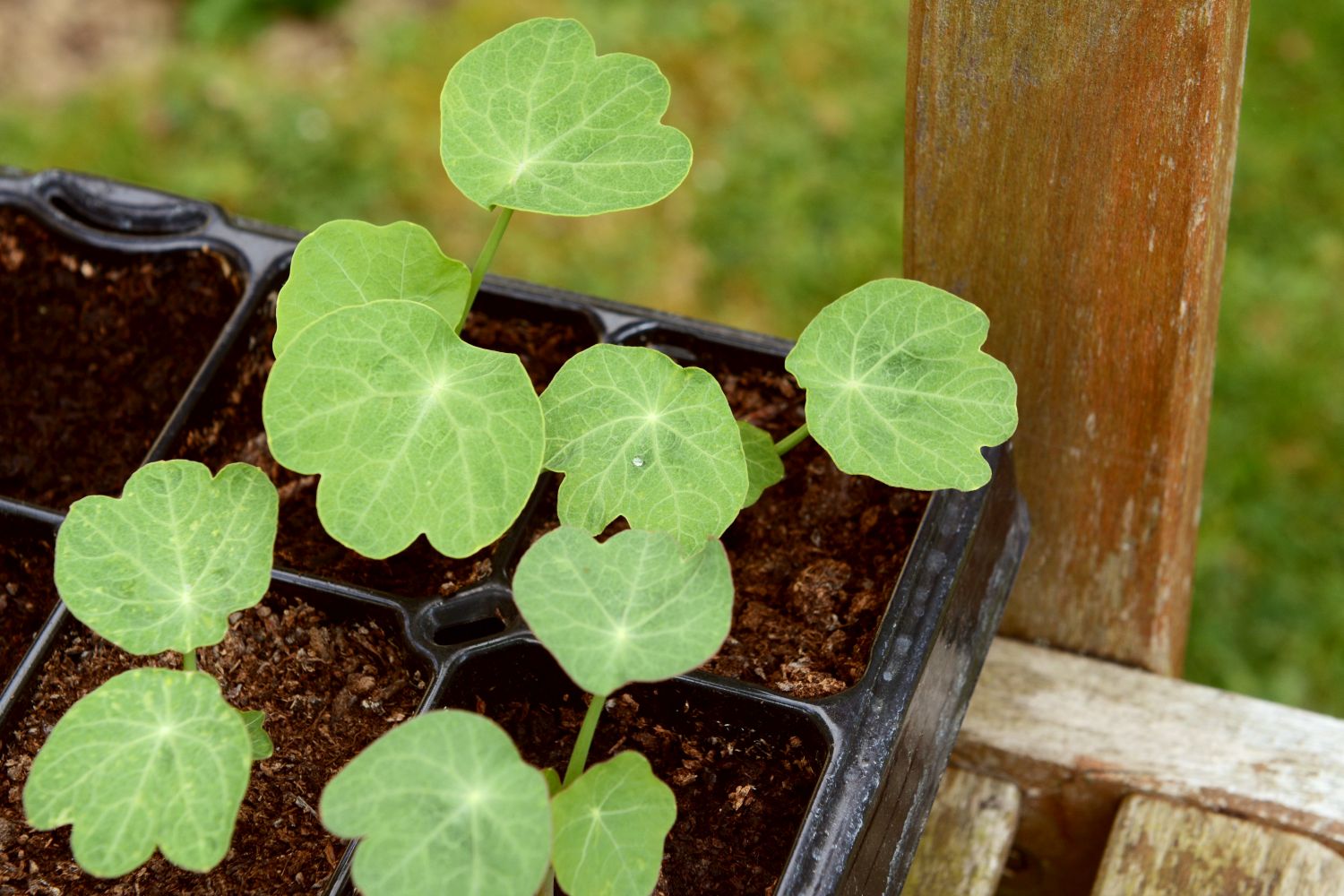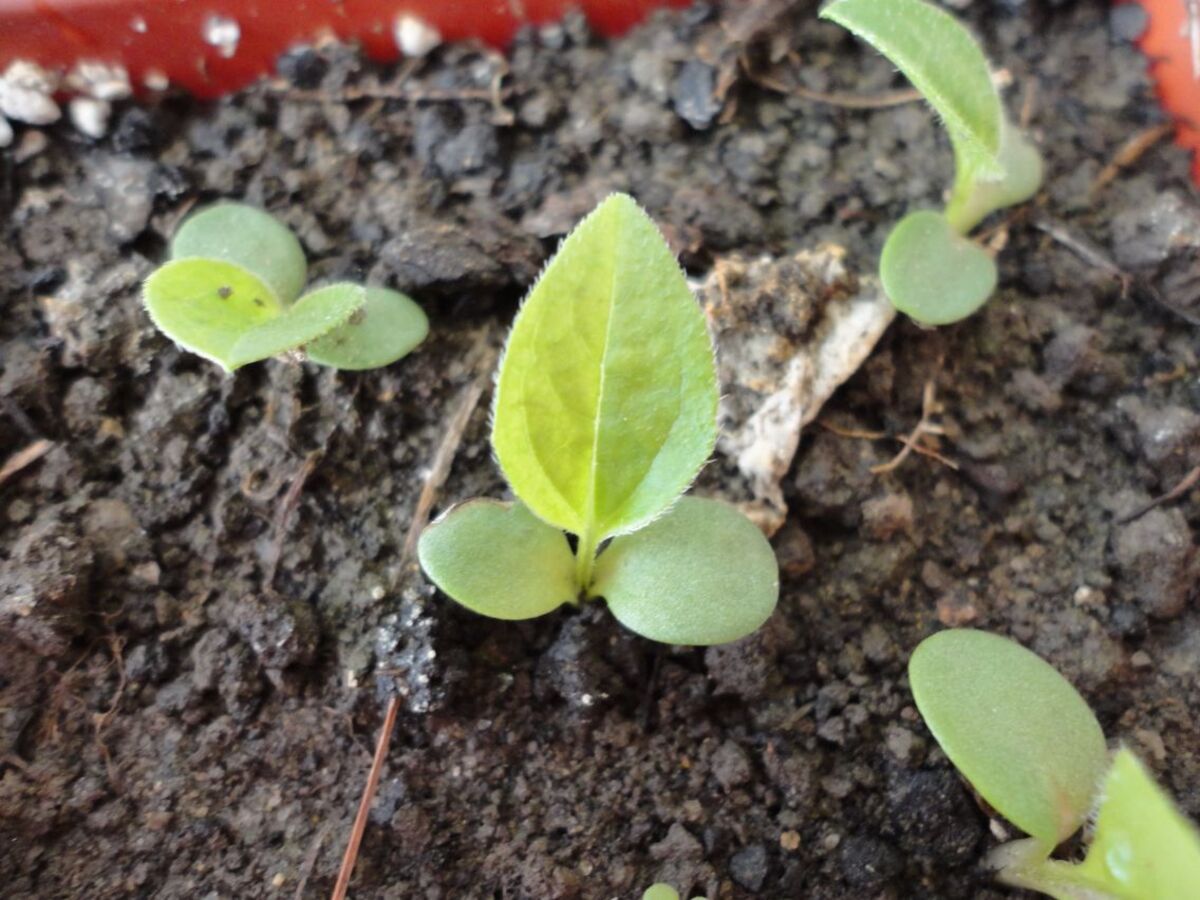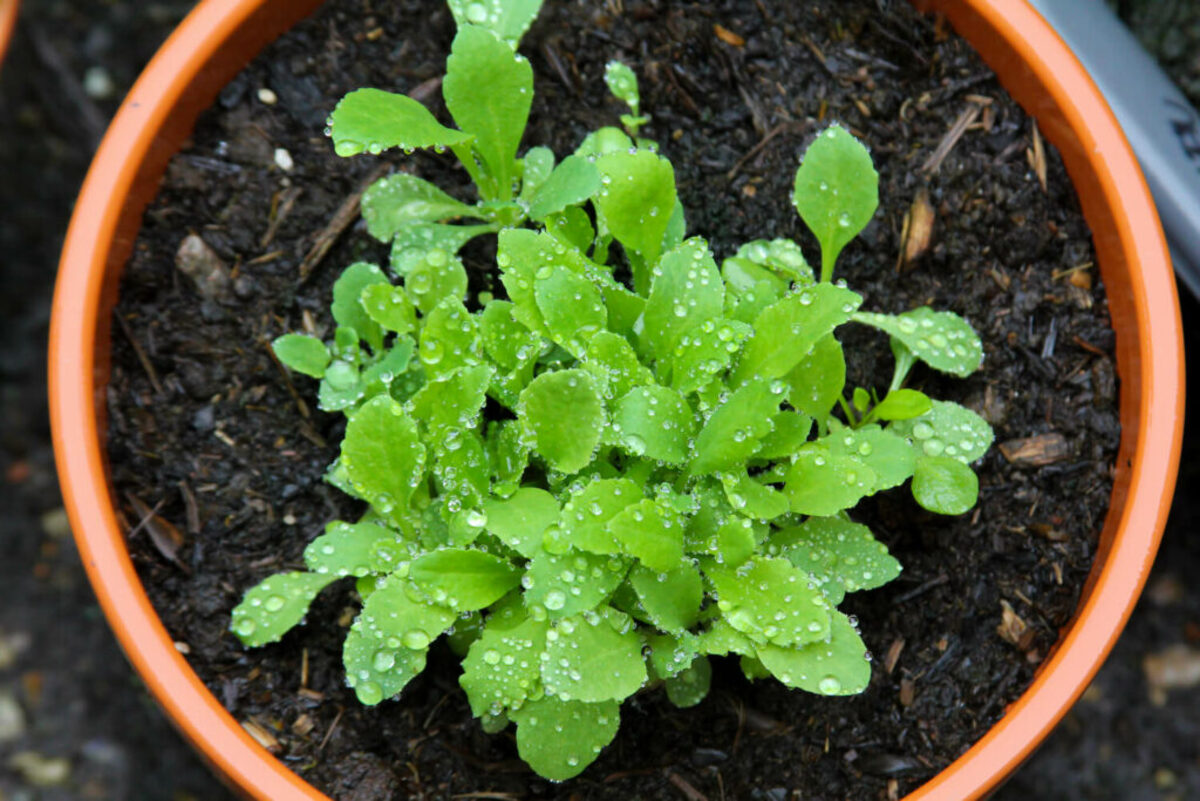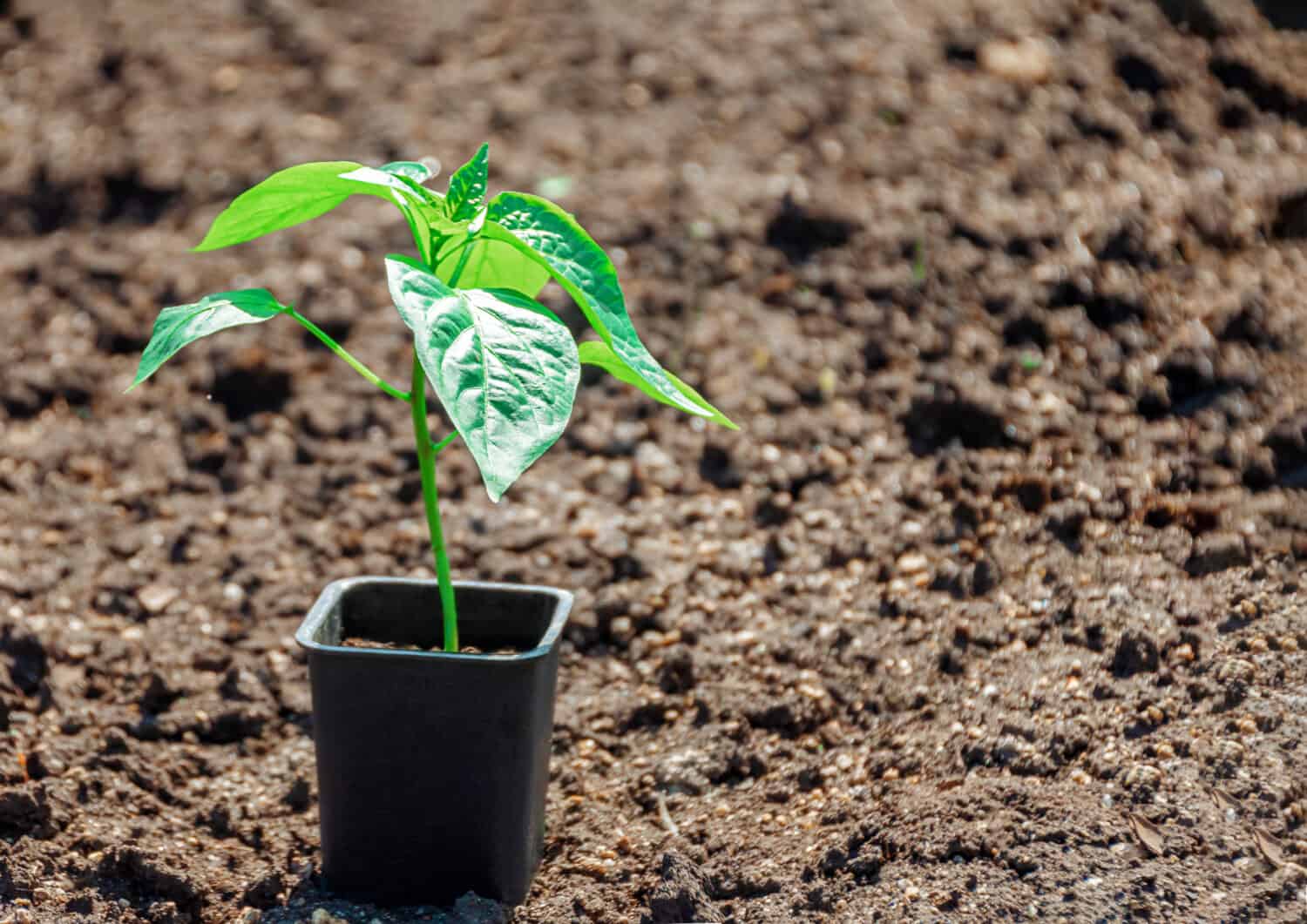Home>Types of Gardening>Edible Gardening>What Does Cantaloupe Seedlings Look Like


Edible Gardening
What Does Cantaloupe Seedlings Look Like
Modified: January 22, 2024
Learn what cantaloupe seedlings look like and how to identify them in your edible garden. Get expert tips for growing healthy cantaloupe plants.
(Many of the links in this article redirect to a specific reviewed product. Your purchase of these products through affiliate links helps to generate commission for Chicagolandgardening.com, at no extra cost. Learn more)
Table of Contents
Introduction
Welcome to the fascinating world of cantaloupe seedlings! Embarking on the journey of growing cantaloupes from seeds is an immensely rewarding experience that offers a sense of accomplishment and a bountiful harvest of delicious, juicy fruits. Understanding the characteristics, identification, and care of cantaloupe seedlings is crucial for nurturing them into thriving plants that yield delectable melons.
As you delve into the realm of cantaloupe seedlings, you'll discover the unique traits that distinguish them from other plants, the methods for identifying them as they sprout from the soil, and the essential care practices to ensure their robust growth. Whether you're a novice gardener or a seasoned horticultural enthusiast, unlocking the secrets of cantaloupe seedlings will empower you to cultivate a flourishing garden brimming with these succulent fruits.
Throughout this article, we'll delve into the intricacies of cantaloupe seedlings, from their distinctive characteristics to the best practices for nurturing and maintaining their health. By the time you finish reading, you'll be equipped with the knowledge and confidence to cultivate thriving cantaloupe plants, enriching your gardening endeavors and reaping the delectable rewards of your labor. So, let's embark on this enlightening journey into the world of cantaloupe seedlings and unlock the secrets to growing these luscious fruits in your own garden.
Characteristics of Cantaloupe Seedlings
Cantaloupe seedlings exhibit a host of distinctive characteristics that set them apart from other plants, making it easier to identify and nurture them as they emerge from the soil. Understanding these traits is essential for effectively caring for and cultivating healthy cantaloupe plants. Here are the key characteristics to look for when identifying cantaloupe seedlings:
- Cotyledon Leaves: When cantaloupe seedlings first emerge, they display cotyledon leaves, which are initially smooth and light green in color. These embryonic leaves serve as the plant’s first source of energy as it begins to photosynthesize.
- True Leaves: As the cantaloupe seedlings mature, they develop their true leaves, which are larger and more defined than the cotyledon leaves. These true leaves typically feature a slightly serrated edge and a deeper green hue, providing a clear indication of the plant’s growth and development.
- Vining Tendency: Cantaloupe seedlings exhibit a natural vining tendency, with their stems elongating and reaching outwards as they mature. This characteristic distinguishes them from other plants and underscores the importance of providing adequate space and support for their sprawling growth.
- Tendril Formation: As cantaloupe seedlings continue to thrive, they produce delicate tendrils that aid in their climbing and anchoring. These tendrils are a distinctive feature of cantaloupe plants and play a vital role in their overall structure and growth pattern.
- Fragrant Scent: One of the most delightful characteristics of cantaloupe seedlings is their subtle, sweet fragrance, which becomes more pronounced as the plants mature. This aromatic quality adds to the allure of cultivating cantaloupes and signals the impending arrival of their delectable fruits.
By familiarizing yourself with these key characteristics, you’ll gain a deeper appreciation for the unique traits that define cantaloupe seedlings. As you observe their growth and development, these distinguishing features will guide you in providing the optimal care and environment for nurturing robust and fruitful cantaloupe plants.
Identifying Cantaloupe Seedlings
Recognizing cantaloupe seedlings as they emerge from the soil is an exciting and pivotal aspect of tending to these vibrant plants. By understanding the distinct markers of cantaloupe seedlings, you can effectively identify them and differentiate them from surrounding vegetation. Here are the key steps and characteristics to consider when identifying cantaloupe seedlings:
- Germination: Cantaloupe seeds typically germinate within 7-10 days when provided with the appropriate warmth, moisture, and soil conditions. As the seeds sprout, the emergence of the first cotyledon leaves signals the initial stage of the seedling’s growth.
- Leaf Structure: Observing the development of true leaves is a crucial aspect of identifying cantaloupe seedlings. These leaves feature a distinct shape and texture, with serrated edges and a deeper green color, setting them apart from the initial cotyledon leaves.
- Growth Habit: Cantaloupe seedlings exhibit a vining growth habit, with their stems elongating and reaching outwards as they mature. This characteristic distinguishes them from other plants and underscores the importance of providing adequate space and support for their sprawling growth.
- Tendril Formation: As cantaloupe seedlings continue to thrive, they produce delicate tendrils that serve as a further indication of their identity. These tendrils play a vital role in the plant’s climbing and anchoring behavior, offering a clear visual cue for recognizing cantaloupe seedlings.
- Fragrance: Another distinctive feature for identifying cantaloupe seedlings is their subtle, sweet fragrance, which becomes more pronounced as the plants mature. This aromatic quality not only adds to the sensory experience but also aids in confirming the presence of cantaloupe seedlings in the garden.
By familiarizing yourself with these key identifying characteristics, you’ll be well-equipped to spot and nurture cantaloupe seedlings with confidence and precision. As you embark on this journey of recognition and care, the unique traits of cantaloupe seedlings will guide you in fostering their growth and ensuring a bountiful harvest of delectable melons.
Care and Maintenance of Cantaloupe Seedlings
Providing attentive care and maintenance is essential for nurturing cantaloupe seedlings into robust plants that yield an abundant harvest of luscious melons. By implementing the following best practices, you can ensure the optimal growth and development of your cantaloupe seedlings, setting the stage for a thriving garden filled with these delectable fruits:
- Optimal Sunlight: Position your cantaloupe seedlings in a location that receives ample sunlight, ideally 6-8 hours of direct sun exposure per day. Adequate sunlight is vital for promoting healthy growth and fruit production.
- Well-Drained Soil: Plant your cantaloupe seedlings in well-drained soil that is rich in organic matter. Ensure proper drainage to prevent waterlogging, which can lead to root rot and other detrimental conditions.
- Ample Watering: Maintain consistent moisture levels for your cantaloupe seedlings, providing regular watering while avoiding over-saturation. A balance of hydration is crucial for supporting vigorous growth and fruit development.
- Support Structures: As cantaloupe plants exhibit a vining growth habit, it’s essential to provide sturdy support structures such as trellises or cages to accommodate their sprawling nature and prevent damage to the delicate vines.
- Pruning and Thinning: Regularly prune and thin out excess foliage to promote air circulation and reduce the risk of disease. This practice also allows the plants to focus their energy on producing high-quality fruits.
- Fertilization: Apply a balanced fertilizer or compost to nourish the soil and provide essential nutrients for the cantaloupe seedlings. Follow recommended guidelines for fertilization to avoid overfeeding the plants.
- Pest and Disease Management: Monitor your cantaloupe seedlings for signs of pests and diseases, taking proactive measures to address any issues promptly. Implement organic pest control methods to protect the plants without compromising their health or the quality of the fruits.
- Harvesting: As your cantaloupe seedlings mature into fruit-bearing plants, monitor the melons for optimal ripeness and harvest them carefully to enjoy the peak flavor and sweetness.
By adhering to these care and maintenance practices, you’ll create an environment that nurtures the growth and vitality of your cantaloupe seedlings, paving the way for a bountiful harvest of delectable melons. Embrace the rewarding journey of tending to these vibrant plants, and savor the satisfaction of cultivating your own succulent cantaloupes.
Conclusion
Exploring the world of cantaloupe seedlings unveils a captivating journey filled with unique characteristics, identifying markers, and essential care practices. As you immerse yourself in the art of nurturing these vibrant plants, you gain a profound appreciation for the intricacies of their growth and the delightful rewards they yield.
From the emergence of cotyledon leaves to the development of fragrant tendrils, cantaloupe seedlings captivate gardeners with their distinct traits, signaling the promise of a fruitful harvest. By recognizing the defining features of these seedlings and providing attentive care, you embark on a fulfilling horticultural endeavor that enriches your gardening experience and yields an abundance of delectable melons.
As you tend to your cantaloupe seedlings, embracing the nuances of sunlight, soil, watering, and support, you establish an environment that fosters their robust growth and vitality. The careful maintenance and nurturing of these plants culminate in the joyous anticipation of harvesting ripe, succulent melons, a testament to your dedication and expertise as a gardener.
With each step of this journey, from identifying the first sprouts to savoring the flavorful fruits, you cultivate a deeper connection to the natural world and the gratifying cycle of growth and abundance. The knowledge and insights gained from nurturing cantaloupe seedlings extend beyond the garden, enriching your understanding of plant life and the harmonious relationship between humans and nature.
As you reflect on the intricacies of cantaloupe seedlings and the art of cultivating these remarkable plants, you embrace the timeless allure of gardening, where patience, care, and a touch of magic converge to yield a harvest that nourishes both body and soul. May your journey with cantaloupe seedlings inspire a continued passion for horticulture and a deep appreciation for the wonders of the natural world.










